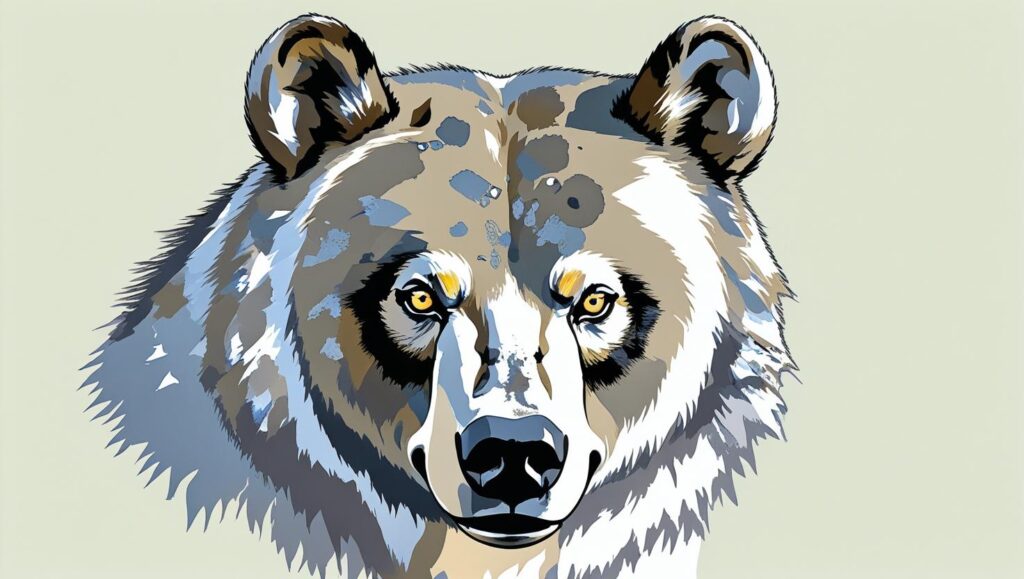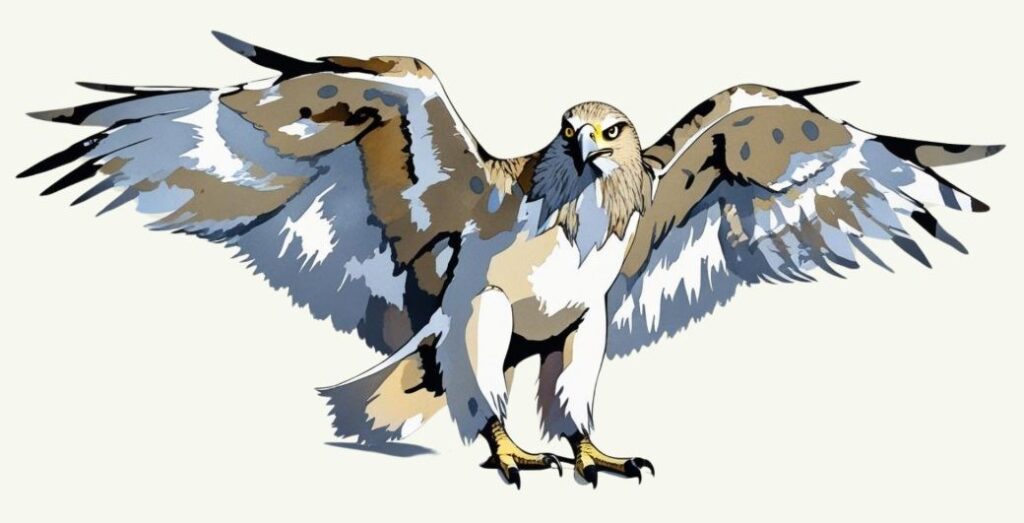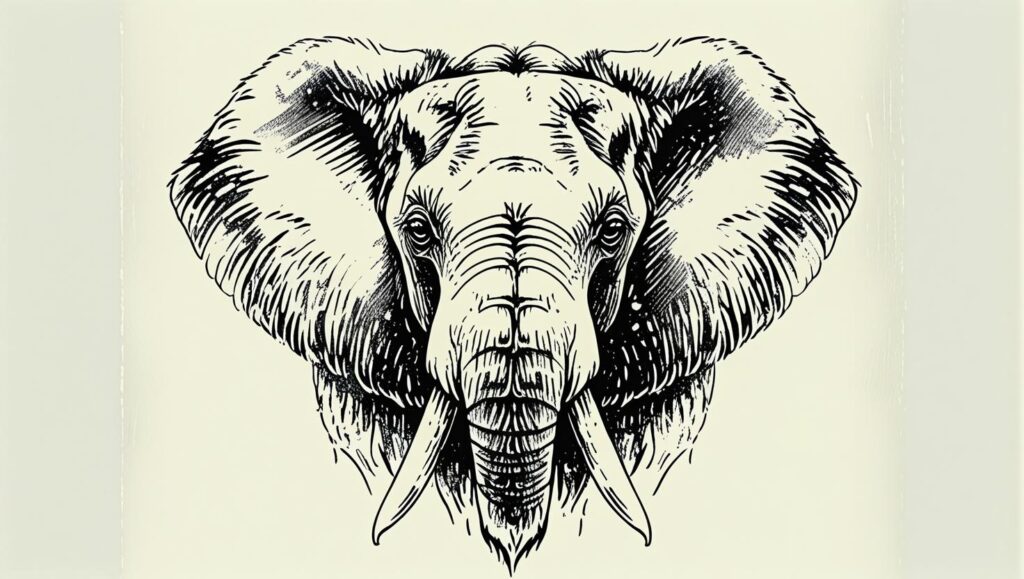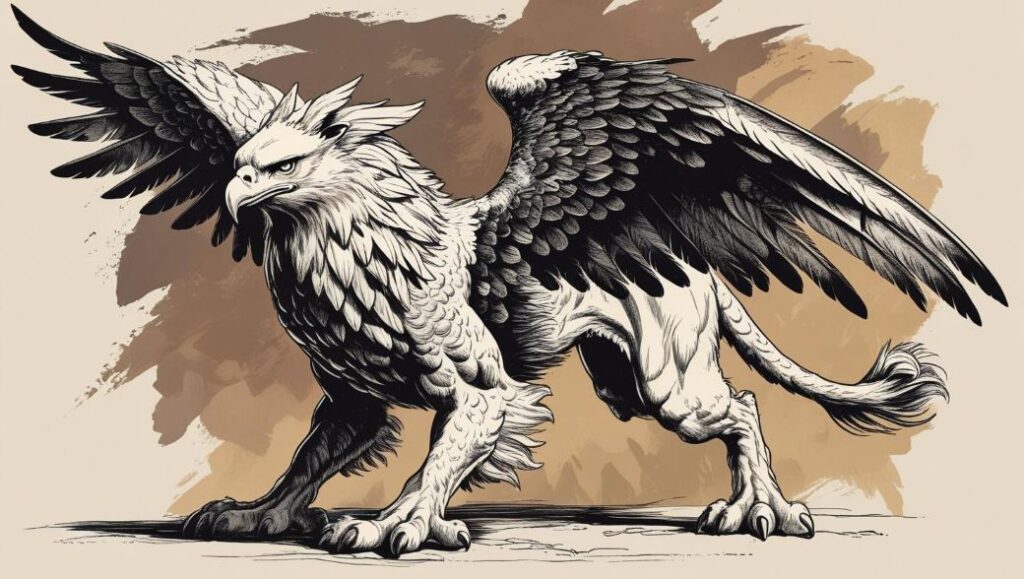When adversity comes calling, incorporating symbols of strength into our environment can be a powerful source of inspiration and resilience to help us stay grounded and motivated. For centuries, cultures around the world have turned to iconic representations of strength, courage, and fortitude to remind us of the inner reserves we possess when the road gets rocky.
From the mighty lion to the steadfast oak tree, these emblems of power have transcended time and geography, becoming a universal language that speaks to the human spirit. As we navigate the challenges of our modern era, reconnecting with these timeless symbols can provide a much-needed boost of confidence and determination to weather any storm.
Key Takeaways
- Symbols of strength have been revered across cultures for thousands of years, serving as beacons of resilience and courage.
- These icons represent a diverse array of influences, from African and Middle Eastern traditions to the ancient symbolism of Europe and the Far East.
- Incorporating symbols of power into daily life can help individuals tap into their own inner reserves of fortitude and perseverance.
- The lion, oak tree, and evil eye are just a few examples of universally recognized symbols that have stood the test of time.
- Exploring the rich history and meaning behind these emblems can deepen our understanding of the human experience and our shared capacity for strength.
The Power of Symbols: Uplifting Emblems from Around the World
Symbols of strength and resilience hold deep historical and cultural significance across the globe. These timeless emblems have represented values like courage, power, and determination for centuries. Incorporating these symbols into one’s daily life can serve as a powerful reminder of inner strength and fortitude, helping to boost confidence and a sense of well-being during challenging times.
Historical and Cultural Significance of Symbols of Strength
From the sun symbol representing joy and power to the lotus flower symbolizing purity and growth, cultural and historical symbols have long captivated the human imagination. Animal emblems like the lion, wolf, and elephant have carried meanings of royalty, loyalty, and wisdom, respectively. Mythical creatures such as the phoenix and dragon have embodied the spirit of renewal and immortality. These enduring symbols have transcended borders, uniting people through shared experiences and aspirations.
Why Incorporating Symbols into Daily Life Can Boost Confidence
By incorporating these powerful symbols into our daily lives, we can tap into their deeper meanings and unlock a sense of personal empowerment. The butterfly’s transformation, the star’s radiance, and the elephant’s steadfastness can serve as visual cues to remind us of our own resilience and fortitude. Donning a Hamsa Hand pendant or displaying a lotus flower in one’s living space can foster a feeling of protection and growth, boosting confidence during challenging times.
The enduring appeal of symbols lies in their ability to transcend language and culture, connecting us to a shared human experience. By embracing the historical and cultural significance of these emblems, we can harness their transformative power, strengthening our resolve and nurturing our inner resilience.
Native American Symbols of Strength and Resilience
In the rich tapestry of Native American cultures, symbols have long been revered as representations of strength, courage, and the unbreakable human spirit. Two such emblems that stand out are the bear and the wolf, which hold deep significance in many tribal traditions.
The Bear: Courage, Family, and Survival
The bear is a symbol of immense power and resilience in Native American communities. Respected for its independent nature and incredible survival instincts, the bear is seen as a embodiment of courage, family, and the ability to thrive even in the harshest of conditions. Native American tribes like the Ojibwe and Tlingit have long held the bear in high regard, incorporating its likeness into their artwork, stories, and spiritual practices.

The Wolf: Loyalty, Intelligence, and Mystical Powers
Equally revered in Native American traditions, the wolf is a symbol of loyalty, intelligence, and mystical powers. Wolves were believed to possess a deep connection to the earth and were thought to have played a role in its creation. Many tribes, such as the Navajo and the Hopi, viewed the wolf as a protector and a guide, honoring its unwavering spirit and keen senses.

The bear and the wolf are just two of the many Native American symbols of strength that have endured through the centuries, serving as beacons of resilience and inspiration for those who seek to connect with the wisdom of the land and the resilience of the human spirit.
Emblems of Fortitude from Ancient Europe
The European continent has long been home to powerful symbols of strength and resilience. One such iconic emblem is the golden eagle, a majestic bird of prey that has captured the imagination of ancient cultures across the region.
The Golden Eagle: Messenger of Gods and Symbol of Immortality
In ancient Egypt and Greece, the golden eagle was revered as a messenger of the gods and a symbol of immortality. The Ancient Egyptians associated this powerful raptor with Ra, the king of all creation, while the Greeks linked it to Zeus, the ruler of the pantheon. These giant birds of prey were seen as embodiments of strength, courage, and the ability to overcome even the most daunting challenges.

The golden eagle’s dominance in the skies and its fearless hunting prowess made it a natural choice for representing the qualities of fortitude and perseverance. For centuries, European cultures have incorporated the golden eagle into their art, architecture, and military insignia, using it as a potent symbol of their own European symbols of strength.
African and Middle Eastern Symbols of Strength
Throughout the African and Middle Eastern regions, numerous symbols have long been revered for their representation of strength, resilience, and unwavering determination. Two of the most prominent and timeless emblems are the elephant and the hamsa.
The Elephant: Wisdom, Loyalty, and Leadership
Elephants have long been cherished in African cultures as symbols of wisdom, loyalty, leadership, power, and strength. These majestic creatures were frequently depicted on ritual items and in various artforms due to their profound significance. The elephant’s unwavering resolve, formidable presence, and tight-knit family bonds have made it a revered icon of perseverance and unity.

The Hamsa: Protection from Evil and Embodiment of Luck
The hamsa, an ancient Middle Eastern symbol, represents protection from evil and embodies luck and strength. This hand-shaped amulet is thought to ward off the “evil eye” and bring good fortune to its bearer. The Hamsa has been a ubiquitous symbol across diverse cultures, serving as a reminder of the power of faith and the human capacity to overcome adversity.
>Whether it’s the mighty elephant or the mystical Hamsa, these African and Middle Eastern symbols of strength continue to inspire and empower individuals facing challenging times. Their timeless significance serves as a testament to the enduring human spirit and the transformative power of symbolic representation.

Symbols of Strength: Motifs of Tenacity from the Far East
In the Far East, ancient symbols have long been revered as emblems of power, prosperity, and resilience. Two such motifs that have endured the test of time are the dragon and the lotus flower.
The Dragon: Power, Prosperity, and Immortality
The dragon is an iconic symbol in Chinese and East Asian cultures, representing power, good fortune, and immortality. According to legend, the first ruler of China was transformed into an immortal dragon that ascended to heaven. The dragon’s ability to control the elements and bring prosperity has made it a ubiquitous figure in architecture, art, and folklore across the region.

The Lotus Flower: Symbols of Strength, Resilience, and Perseverance
The lotus flower is another powerful Far Eastern symbol, representing resilience and perseverance. Despite its delicate beauty, the lotus can thrive in the darkest, muddiest conditions, making it a potent emblem of strength and growth. In Buddhist and Hindu traditions, the lotus is revered for its ability to emerge from the depths and bloom into a symbol of purity and enlightenment.
These Far Eastern symbols of strength continue to inspire and uplift individuals seeking to overcome adversity and cultivate inner fortitude. The dragon symbol and lotus flower symbol serve as timeless reminders of the power of the human spirit to rise above even the most challenging circumstances.

Celtic Badges of Courage and Strength
The rich tapestry of Celtic culture is woven with powerful symbols that have endured throughout the ages. Among the most captivating of these is the griffin, a mythical creature with the head and wings of an eagle and the body and legs of a lion. This majestic emblem was deeply revered in Celtic society, embodying qualities such as strength, boldness, and battlefield prowess.
The griffin was closely associated with Celtic warriors and nobility, frequently adorning their coats of arms and battle standards. Its fierce yet regal presence was seen as a testament to the unwavering courage and might of the Celtic people. The griffin’s dual nature, blending the characteristics of the noble eagle and the powerful lion, symbolized the harmony between the spiritual and the physical realms – a concept deeply rooted in Celtic beliefs.

Beyond its military significance, the griffin was also regarded as a guardian and protector, charged with safeguarding the Celtic people and their sacred lands. Its presence was believed to bring good fortune and ward off evil, making it a powerful talisman for those seeking to embody the Celtic spirit of resilience and tenacity.
Today, the griffin remains a potent symbol of Celtic heritage, serving as a reminder of the enduring strength and fortitude that have long defined this vibrant culture. Whether adorning the crests of ancient clans or inspiring modern-day designs, the griffin’s enduring legacy continues to captivate and inspire those who seek to connect with the Celtic symbols of strength and courage.
Embodying Strength: Personal Symbols and Metaphors
In addition to the rich cultural symbols of strength found around the world, individuals can also adopt personal symbols and metaphors to represent their own resilience and determination. These visual cues can serve as powerful reminders of the inner fortitude that helps us navigate even the most challenging circumstances.
The Oak Tree: Deep Roots and Unwavering Fortitude
The oak tree, with its deep, anchoring roots and unwavering trunk, can be a potent personal symbol of strength. Just as the oak stands tall and steadfast, weathering the storms of life, we can draw inspiration from its steadfast nature. The oak’s ability to adapt and thrive, even in adversity, reminds us of our own capacity for personal symbols of strength.

The Rock: Solid Determination and Ability to Overcome
Another powerful personal metaphor is the image of a solid rock. Unyielding and immovable, the rock symbolizes determination and fortitude that enables us to overcome even the most daunting obstacles. Like the rock, we can draw upon an unshakable inner core to weather any storm and emerge stronger than before.
By embracing these oak tree symbol and rock-like qualities, we can cultivate a deeper sense of personal strength and resilience. These symbols serve as touchstones, reminding us of our inherent capacity to endure, adapt, and thrive, no matter what challenges we face.
The Timeless Appeal of Symbols of Symbols of Strength
Symbols of strength and resilience have endured for centuries because of their profound ability to inspire, motivate, and uplift. Across cultures and throughout history, these emblems have represented the human capacity for courage, perseverance, and triumph in the face of adversity. Their timeless appeal lies in their capacity to connect us to something greater than ourselves and to remind us of the inner resources we all possess.
From the mighty Mjolnir, Thor’s hammer representing strength and protection in Norse mythology, to the Aegishjalmur – the ancient Norse symbol of invincibility, these symbols have transcended time and space to become ubiquitous representations of power. The Tree of Life, a universal symbol found in multiple spiritual traditions, symbolizes the strength and wisdom that comes from deep roots and steady growth.
Feathers, thunderbolts, and the majestic Sphinx – each of these emblems carries a profound significance, representing values like spiritual guidance, primal energy, and patience. Across cultures, the wolf, bull, eagle, and elephant have become enduring symbols of loyalty, confidence, courage, and resilience.
The timeless appeal of these strength symbols lies in their ability to tap into our shared humanity, reminding us of the essential qualities that define us as individuals and as a species. Whether adorning our bodies, our homes, or our everyday objects, these powerful emblems continue to captivate and inspire, serving as beacons of hope and strength in even the darkest of times.
Conclusion
The symbols of strength and resilience explored throughout this article hold immense power to uplift and empower us, especially during challenging times. From the bear and wolf of Native American lore to the dragon and lotus flower of the Far East, these emblems carry deep historical and cultural significance, reminding us of our capacity for courage, determination, and growth.
By incorporating these symbols into our daily lives, we can tap into a wellspring of inner strength and boost our confidence to overcome obstacles. The timeless appeal of these symbols lies in their ability to connect us to something greater than ourselves and to reaffirm the resilience inherent in the human spirit.
As we navigate the complexities of life, these symbols of strength serve as beacons of hope, guiding us through the darkness and inspiring us to rise above adversity. They remind us that we are not alone in our struggles, but part of a vast tapestry of human experience, woven together by the threads of resilience and the power of shared symbols.
More symbols to explore:
You’ll Love These Notable Symbols and Their Meanings
Family Symbols with Powerful Meanings from Across the Globe
The Power of Family Protection Symbols: The Viking Way
FAQ
What is the significance of symbols of strength and resilience?
Symbols of strength and resilience have deep historical and cultural significance across the globe. They have represented values like courage, power, and determination for centuries. Incorporating these timeless emblems into one’s daily life can serve as a powerful reminder of inner strength and fortitude, helping to boost confidence and a sense of well-being during challenging times.
What are some examples of strength symbols in Native American cultures?
In Native American cultures, the bear is a symbol of strength, courage, family, and health. Bears are respected for their independent nature and incredible survival instincts. Similarly, the wolf is a symbol of loyalty, intelligence, power, and courage in Native American traditions. Wolves were also thought to possess mystical powers and to have created the earth.
What was the significance of the golden eagle in ancient European cultures?
The golden eagle was an important symbol in ancient European cultures, including Ancient Egypt and Greece. These giant birds of prey were seen as messengers of the gods and represented strength, immortality, and courage. The Ancient Egyptians associated the golden eagle with the king of all creation, Ra, while the Greeks linked it to Zeus, the king of the gods.
What are some examples of strength symbols from African and Middle Eastern cultures?
Elephants have long been symbols of wisdom, loyalty, leadership, power, and strength in African cultures. They were frequently depicted on ritual items due to their importance. Meanwhile, the hamsa, an ancient Middle Eastern symbol, represents protection from evil and embodies luck and strength. The hamsa is a hand-shaped amulet that is thought to ward off the “evil eye” and bring good fortune.
What are the significance of the dragon and lotus flower in East Asian cultures?
In China and other parts of East Asia, the dragon has been an incredible symbol of power, good luck, prosperity, and strength for centuries. According to legend, the first ruler of China was transformed into an immortal dragon that ascended to heaven. The lotus flower is another important Far Eastern symbol, representing resilience and perseverance. Its ability to thrive in dark, muddy conditions makes it a potent emblem of strength and growth.
What was the significance of the griffin in Celtic culture?
The griffin, a mythological creature with the head and wings of an eagle and the body and legs of a lion, was an important symbol in Celtic culture. Representing power, strength, majesty, boldness, leadership, and intelligence, the griffin was associated with bravery and prowess on the battlefield. Griffins frequently appeared on the coats of arms of Celtic warriors and nobility.
How can individuals incorporate symbols of strength and resilience into their lives?
In addition to cultural symbols of strength, individuals can also adopt personal symbols and metaphors to represent their own resilience and determination. The oak tree, with its deep roots and unwavering trunk, can serve as a powerful visual reminder of one’s own grounding and ability to withstand challenges. Similarly, the image of a solid rock can symbolize steadfast determination and the capacity to overcome obstacles.
Source Links
- Symbol Charms: Get the Scoop Behind Popular Symbols
- 40 Common Symbols and Meanings (& How to Use Them)
- 54 Native American Symbols With Deep, Poetic Meanings
- Celtic Symbols | Celtic Thunder
- GLOSSARY: Symbols, explained –
- The meaning of symbols: history, origins and metaphors –
- 15 Celtic Symbols and Meanings (An Irishman’s 2024 Guide)


